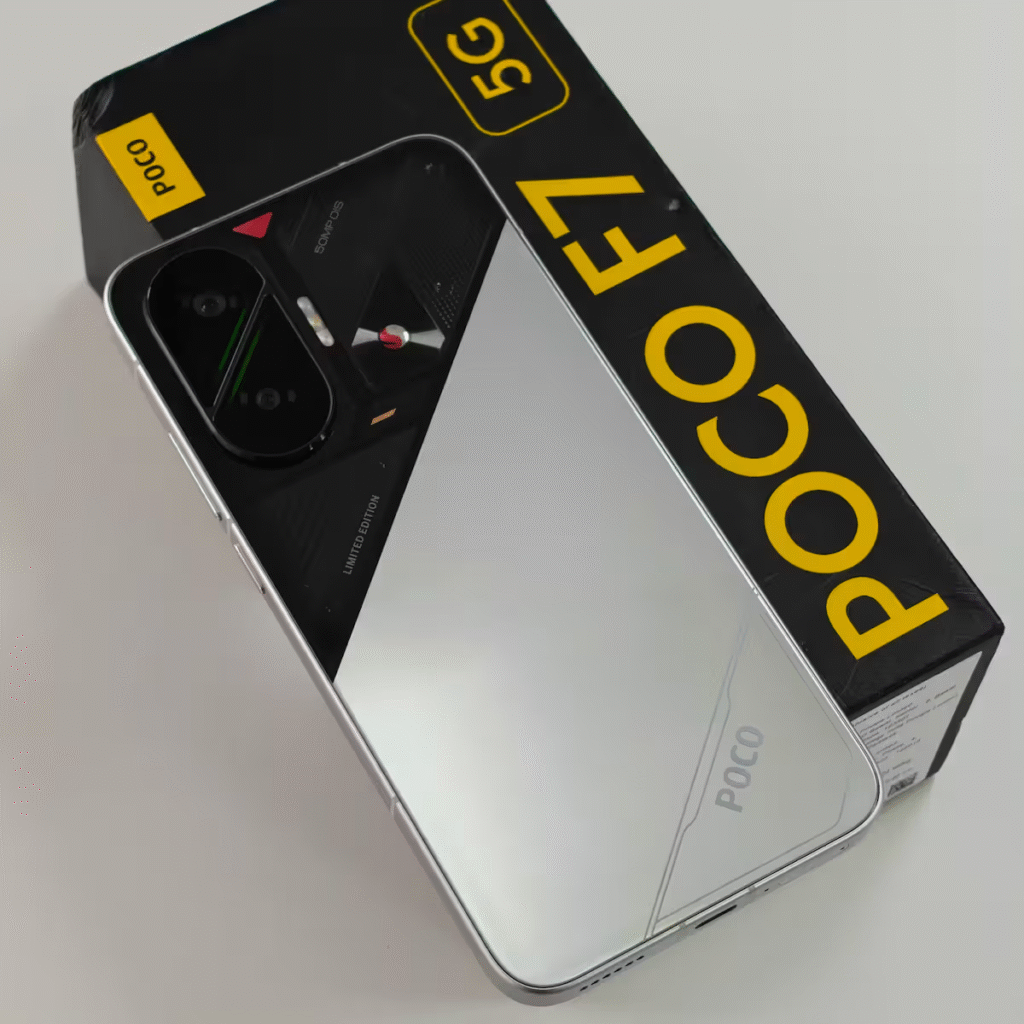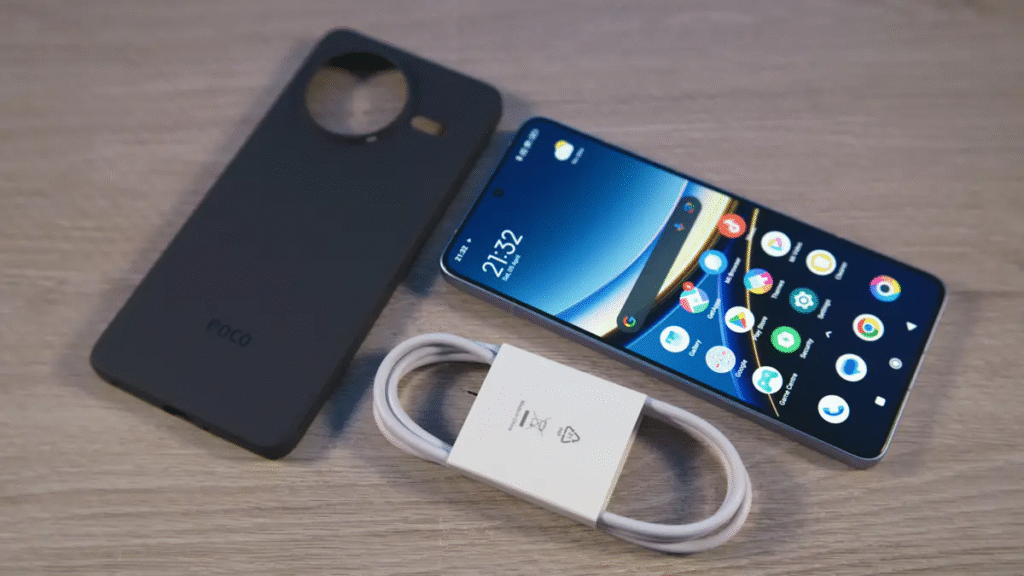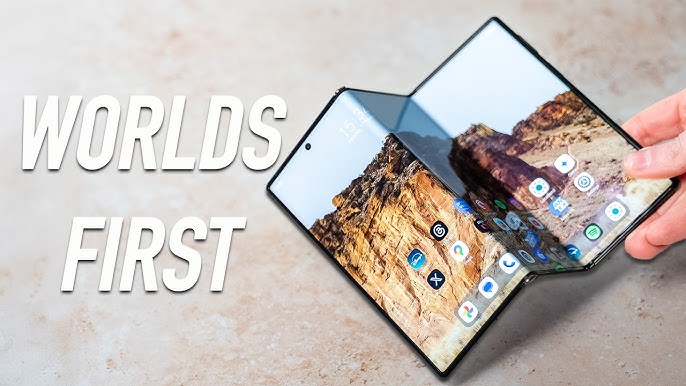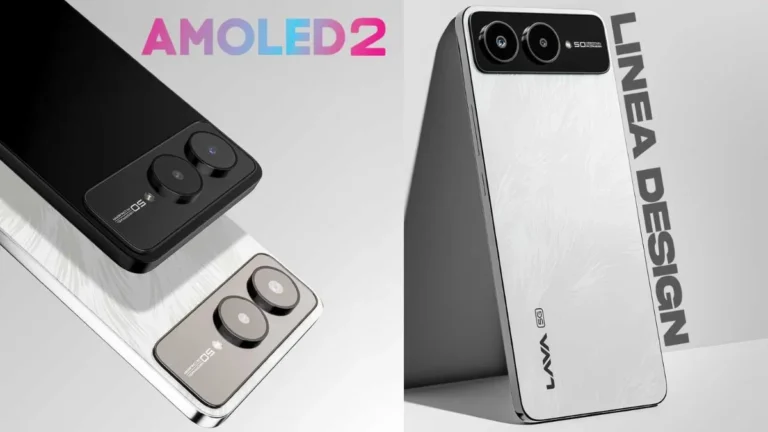
In a market flooded with mid-range smartphones, the Poco F7 dares to go bold—both in aesthetics and in raw performance. Right out of the box, it delivers a strong first impression, thanks to its premium glass build, Cyber-inspired design, and a spec sheet that competes head-to-head with many flagship models. The Poco F7 Review isn’t just about another mid-range phone—it’s about a device that challenges the very definition of value in 2025.
Packed with the new Snapdragon 8s Gen 4 processor, the Poco F7 promises lightning-fast performance, superior multitasking, and gaming-ready graphics—all at a price that undercuts flagship competitors by a large margin. Add to that a stunning 1.5K AMOLED display, a massive 6,500 mAh battery (7,550 mAh in the Indian variant), and advanced LiquidCool 4.0 thermal tech, and you’re looking at a smartphone engineered for both power and endurance.
This Poco F7 Review makes it clear: this device isn’t just targeting the casual buyer. It’s built for serious mobile gamers, performance-driven users, and anyone who wants flagship features without spending flagship money. Whether you’re juggling demanding apps, pushing frame rates in the latest mobile titles, or simply want a sleek device that stands out—Poco F7 is positioning itself as the go-to choice in the ₹30K segment.
As we dive deeper into this Poco F7 Review, you’ll see why this device is generating such buzz—and how it might just be one of the smartest mid-range purchases of the year.
Design & Build – Why the Poco F7 Review Calls It a Head‑Turner
When it comes to smartphone design in the mid-range category, most brands play it safe—but the Poco F7 Review proves that bold choices can pay off. Poco has gone all-in on aesthetics with a design language that turns heads instantly. The phone features a symmetrical and polished dual-glass body that feels every bit as premium as flagship models, protected by Gorilla Glass Victus 7i on both front and back for added toughness.
The industrial-grade IP68/IP69 rating makes the Poco F7 not just beautiful, but battle-ready—capable of surviving dust, water, and accidental drops. This is a rare feat in the under ₹35,000 segment, where many phones still skip high-grade ingress protection. The flat frame with slightly curved edges gives it a modern, confident grip, and the overall construction strikes the perfect balance between bold style and ergonomic comfort.
In this Poco F7 Review, color options like Cyber Silver, Racing Blue, and Stealth Black stand out as true style statements. Each finish reflects light differently and adds personality to the device without going over the top. It’s clear Poco has paid close attention to aesthetics—this is a phone that looks and feels much more expensive than it actually is.
What really seals the deal is the in-hand feel. At just under 200 grams, the Poco F7 feels solid yet manageable, with a weight distribution that makes long usage comfortable. For users who care about both fashion and function, the Poco F7 Review leaves no doubt: this is a mid-range phone with a flagship soul, wrapped in a futuristic design that demands attention.
Also Read: 3 Stunning Motorola Razr 60 & Moto Buds Loop in Swarovski Sparkle
Display – Poco F7 Review: Brilliance in Every Frame
In the world of smartphone displays, few mid-range devices dare to go beyond the basics. But the Poco F7 Review proves this phone is built differently. At the heart of the device lies a massive 6.83-inch AMOLED display that immediately impresses with its immersive visuals and crisp details. With a 1.5K resolution (2712 × 1220 pixels), this panel offers a pixel density of around 446 PPI—sharper than most competitors in the same price bracket.
The display also boasts a buttery-smooth 120 Hz refresh rate, which transforms daily interactions—scrolling, swiping, and animations all feel snappy and fluid. Whether you’re navigating social media, playing fast-paced games, or multitasking with heavy apps, the Poco F7 delivers a flagship-like experience. The touch sampling rate of 2160 Hz further enhances responsiveness, giving gamers an edge in reaction-based titles.
What really elevates the display experience in the Poco F7 Review is its peak brightness—an eye-popping 3,000+ nits (in auto HDR scenarios). This means flawless visibility even under harsh sunlight, making it ideal for outdoor use. The display supports HDR10+ and Dolby Vision, ensuring vibrant colors, deep blacks, and stunning contrast ratios when streaming Netflix, YouTube, or high-res content.
Multimedia lovers will find the Poco F7 a complete entertainment hub. Paired with stereo speakers featuring Dolby Atmos, watching videos or gaming becomes a highly immersive experience. From cinematic viewing to intense FPS gaming, the Poco F7’s display holds its ground with absolute brilliance.
All in all, the Poco F7 Review confirms that this phone’s display is not just a spec-sheet win—it’s a daily-use delight. For gamers, binge-watchers, and anyone who demands premium visuals, the Poco F7’s screen is easily one of the best in its class.
Performance – Poco F7 Review: Gaming‑Ready and Smooth

Performance is where the Poco F7 Review truly begins to blur the line between mid-range and flagship. At the core of the device is the Qualcomm Snapdragon 8s Gen 4 chipset, a 4nm processor built to handle high-performance tasks with efficiency and speed. This SoC brings flagship-grade architecture to the mid-range segment, offering an octa-core CPU that includes a powerful Cortex-X4 prime core clocked up to 3.0 GHz.
Paired with LPDDR5X RAM (up to 12 GB) and ultra-fast UFS 4.1 storage (up to 512 GB), the Poco F7 handles everything from daily multitasking to demanding mobile games with ease. In real-world usage, app switching is instant, and background processes run smoothly without lag—even when juggling multiple heavy apps. Benchmarks reflect this power too: the Poco F7 scores over 1.5 million on AnTuTu, outperforming some previous-generation flagships.
The Poco F7 Review wouldn’t be complete without diving into its gaming capabilities—and they’re impressive. Titles like BGMI, Call of Duty Mobile, and Genshin Impact run at the highest settings with stable frame rates and minimal drops. Thanks to the Adreno 735 GPU and Poco’s WildBoost 4.0 engine, gaming on this device feels optimized, responsive, and fluid.
But what keeps the performance sustainable is Poco’s LiquidCool 4.0 technology. This advanced vapor chamber cooling system effectively reduces thermal throttling during extended gaming sessions. In stress tests, the device maintained consistent performance even after 45 minutes of continuous gameplay, with surface temperatures peaking under 42°C—much cooler than average in this price range.
The Poco F7 Review also praises its performance consistency under pressure. Unlike many mid-range phones that slow down with heat or extended load, the F7 retains its speed and fluidity over time, making it a reliable choice for power users.
In short, whether you’re a gamer, a multitasker, or someone who demands top-tier performance for less money, the Poco F7 Review confirms that this phone delivers smooth, high-speed performance that rivals much more expensive flagships.
Also Read:iPhone 17 Leak Hints Bigger Screen, New OS & Camera Upgrade
Battery & Charging – Poco F7 Review: Marathon Battery Life
Battery life is one of the defining features in this Poco F7 Review, and Poco has gone the extra mile—literally. While the global variant houses a substantial 6,500 mAh battery, the India-specific model takes things even further with a whopping 7,550 mAh capacity—a battery size rarely seen outside rugged or ultra-endurance smartphones.
In daily usage, this translates to true all-day (and often two-day) battery life, even for power users. For regular tasks like browsing, social media, YouTube streaming, and messaging, users can easily stretch the Poco F7 across 1.5 to 2 days without reaching for the charger. The screen-on time (SOT) during testing frequently exceeds 9 to 10 hours, which is a massive win for those who rely heavily on their phone throughout the day.
This Poco F7 Review also highlights impressive stamina during intensive workloads. In heavy gaming sessions with titles like PUBG Mobile and Asphalt 9, the phone delivered over 7 hours of continuous gameplay without dying out—thanks not just to the battery, but also to Poco’s efficient software and thermal management. Streaming HD content over Wi-Fi for an hour drains only around 7–8% battery, which is remarkably efficient for a phone with such a high-resolution and bright display.
Then comes charging—90W turbo charging ensures the massive battery doesn’t become an inconvenience. Using the included charger, the Poco F7 goes from 0% to 100% in about 40–45 minutes, which is astonishing for a battery of this size. It also supports 22.5W reverse wired charging, allowing the device to double as a power bank for smaller gadgets like earbuds or smartwatches—a neat and practical touch.
The Poco F7 Review makes it clear: this phone is built for users who hate battery anxiety. Whether you’re a content creator on the move, a student juggling classes and gaming, or someone who just forgets to charge their phone at night, the Poco F7 has your back. Its marathon battery, fast refueling, and reliable power efficiency set it apart in the crowded mid-range segment.
Camera Performance – Poco F7 Review: Solid, But Not Stellar
When it comes to imaging, the Poco F7 Review reveals a camera setup that gets the job done—but doesn’t quite aim for DSLR-level brilliance. Equipped with a dual rear camera system—a 50 MP Sony IMX882 main sensor with OIS and an 8 MP ultra-wide lens—the Poco F7 offers a balanced but modest photography experience, prioritizing speed and reliability over complexity.
In daylight conditions, the Poco F7 performs impressively well. The 50 MP sensor captures sharp, vibrant images with good dynamic range and color reproduction. Details in bright environments are well-preserved, and auto HDR kicks in efficiently to balance shadows and highlights. Whether you’re shooting landscapes or portraits, the main lens delivers consistently good results, making it a reliable point-and-shoot companion.
However, the Poco F7 Review points out that the 8 MP ultra-wide camera is where compromises begin. While it’s decent for casual wide-angle shots, it tends to soften edges and show distortion around corners. Color consistency between the main and ultra-wide sensors also varies, which is noticeable when switching between lenses in real time.
Low-light performance is a mixed bag. The main sensor performs respectably at night, especially with Night Mode enabled. It reduces noise and enhances exposure without over-processing the image. However, without dedicated telephoto or advanced low-light hardware, shots lack the clarity and sharpness you’d get from more camera-centric smartphones. The ultra-wide struggles in dim settings, often producing noisy and underexposed results.
Video capabilities are solid but not exceptional. The Poco F7 can shoot 4K at 60fps with the main camera, and the inclusion of OIS ensures smoother footage during handheld recording. Video stabilization works well for walking shots, although ultra-wide video is limited to lower resolutions and frame rates.
On the front, the 16 MP selfie camera offers good clarity for video calls and social media. Skin tones appear natural in well-lit environments, and AI beauty modes are available (and thankfully optional). In darker conditions, selfies can look soft and noisy, though screen flash helps in emergencies.
In summary, the Poco F7 Review confirms that while its camera system isn’t aiming to dethrone premium photography phones, it provides dependable results in most everyday scenarios. For users focused more on performance, gaming, or content consumption, the Poco F7’s camera is perfectly adequate—and possibly better than expected at this price point.
Also Read: Apple Hits 3 Billion iPhones Shipped Since 2007
Software Experience – Poco F7 Review: Loaded with Features and Bloatware
In terms of software, the Poco F7 Review highlights a powerful yet somewhat cluttered experience, thanks to HyperOS 2—Xiaomi’s latest custom interface built on top of Android 15. This updated skin introduces a refined visual language, smoother animations, and a suite of AI-powered features that aim to boost productivity and personalisation. However, while the software brings several functional upgrades, it isn’t without its share of drawbacks.
HyperOS 2 on the Poco F7 delivers many intelligent enhancements such as AI-based image editing, dynamic charging modes, and improved resource allocation that helps manage background apps more efficiently. There’s also built-in memory expansion (up to 24 GB using virtual RAM), a floating windows system, and lock screen customisation that makes the overall UI experience quite feature-rich. The phone is also slated to receive four years of software updates (three Android versions and one year of security patches), which is a big plus for long-term users.
That said, the Poco F7 Review must acknowledge the elephant in the room: bloatware and ads. Out of the box, the device comes preloaded with numerous third-party apps and system utilities that many users may find unnecessary. While most can be uninstalled or disabled, it creates a less-than-premium first impression. Moreover, ads and promotional content occasionally appear in system apps like the file manager or app installer—a trade-off that Poco still hasn’t eliminated from its UI approach.
The user experience also has moments of inconsistency. For instance, gesture navigation feels fluid in most areas, but occasional stutters or app crashes can occur during rapid multitasking. Theme engine elements sometimes conflict with third-party apps, causing UI overlaps. These aren’t deal-breakers, but they do contrast with the otherwise fluid performance highlighted in this Poco F7 Review.
One of the more appreciated aspects of HyperOS 2 is its privacy dashboard and permission control features, which now give users deeper insights into app behaviors—something Android 15 handles very well natively.
To sum up, the Poco F7 Review paints a picture of a phone with powerful software potential weighed down slightly by Xiaomi’s aggressive monetization model. If you’re someone who can tolerate or tweak the software to minimize distractions, you’ll appreciate the deep customization and long-term update support. But if a clean, bloat-free experience is your priority, this remains one of Poco F7’s few compromises.

Value & Competition – Poco F7 Review: Flagship vs Mid‑Ranger
One of the most compelling angles in this Poco F7 Review is the value it offers in a fiercely competitive mid-range market. Positioned around the ₹30,000–₹33,000 price point in India, the Poco F7 manages to challenge not only its direct rivals but also punch well above its weight by delivering features typically reserved for flagship smartphones.
Let’s compare it to two of its main competitors—OnePlus Nord 5 and Nothing Phone 3—both popular choices in the premium mid-range category.
The OnePlus Nord 5 brings the brand’s signature clean OxygenOS experience, solid performance with the Dimensity 8300 chipset, and a decent display. However, when stacked against the Poco F7’s Snapdragon 8s Gen 4 and LPDDR5X + UFS 4.1 combo, the Nord 5 slightly lags in raw power. Moreover, the Poco F7 features a larger 6.83″ 1.5K AMOLED panel with up to 3,000 nits brightness, compared to the Nord’s more modest brightness levels and 1080p resolution.
Then there’s the Nothing Phone 3, which excels in design, UI cleanliness, and community-driven updates. It features a Snapdragon 7+ Gen 3 chipset and a highly optimized Nothing OS, but the Poco F7 Review confirms that Poco outperforms it in CPU/GPU benchmarks, battery size, and charging speed. The F7 also packs a 7,550 mAh battery (India variant), dwarfing the 4,500–5,000 mAh cells found in both rivals, while offering 90W fast charging and reverse wired charging—features missing from both competitors.
In terms of camera performance, all three phones deliver acceptable results, but none dominate this segment. The Poco F7 holds its own with a 50 MP OIS-enabled sensor and competent video recording, although it doesn’t surpass the camera tuning found on Nothing’s color-science or OnePlus’ imaging consistency.
What seals the deal for many buyers, as highlighted in this Poco F7 Review, is the price-to-performance ratio. No other phone in its price range currently offers such a complete package: flagship-grade chipset, ultra-bright display, massive battery, ultra-fast charging, and a rugged IP68/IP69-certified build. While the software may have some drawbacks, those looking for performance and power at a mid-range price will find the Poco F7 a nearly unbeatable deal.
In conclusion, the Poco F7 Review makes it clear that Poco isn’t just targeting budget users—it’s going straight for the jugular of the mid-premium space. For buyers seeking flagship power without the flagship price, the Poco F7 stands tall among its rivals.
Read Blog: Are Noise Buds F1 the Best TWS Under ₹1,200?
Pros & Cons Summary – Poco F7 Review: Strengths and Trade‑Offs
As we wrap up this Poco F7 Review, it’s clear that the phone brings a compelling mix of high-end features and calculated compromises. Here’s a quick snapshot of what the Poco F7 gets right—and where it leaves room for improvement:
Pros:
1. Bold and Premium Design
The Poco F7 stands out with its futuristic design, glass construction, and IP68/IP69 durability. It looks and feels more expensive than it is, making a strong style statement in its segment.
2. Excellent Display and Performance
With a 6.83″ 1.5K AMOLED screen, 120Hz refresh rate, and up to 3,000 nits brightness, the Poco F7 delivers an immersive experience for both gaming and multimedia. Paired with the Snapdragon 8s Gen 4, LPDDR5X RAM, and UFS 4.1 storage, performance is nothing short of flagship-grade.
3. Long Battery Life
The India variant’s 7,550 mAh battery is a powerhouse that comfortably lasts 1.5 to 2 days with moderate use—even for gamers. It’s one of the best battery performers in its class.
4. Fast Charging
Equipped with 90W fast charging, the device powers up quickly. Reverse wired charging adds a practical bonus for powering up accessories or other phones.
Cons:
1. Average Camera Setup
While the 50 MP + 8 MP dual camera does a decent job in daylight, low-light and dynamic range performance are only average. Competing phones may offer better tuned image processing.
2. UI Clutter and Pre-Installed Apps
HyperOS 2, although packed with features, is weighed down by bloatware and occasional ads, which can affect the premium feel.
3. Slight Heating Under Load
Extended gaming or camera usage may result in minor heating, especially around the frame. It’s not alarming, but worth noting for power users.
In summary, this Poco F7 Review reaffirms the phone’s identity as a performance-first mid-ranger with standout design and battery credentials. It’s not perfect, but the trade-offs are well balanced against what it delivers at this price. For those who can look past the average cameras and UI clutter, the Poco F7 is a bold and powerful choice.
Conclusion – Poco F7 Review: The Value‑King of Mid‑Range Phones?
After an in-depth Poco F7 Review, it’s safe to say that this device cements its place as one of the strongest contenders in the 2025 mid-range segment. Poco has once again delivered a smartphone that prioritizes raw performance, long-lasting battery life, and bold, flagship-style design — all at an aggressive price point.
For users who demand high-end gaming capabilities, buttery-smooth performance, and a vibrant multimedia experience, the Poco F7 checks nearly every box. Its Snapdragon 8s Gen 4, LPDDR5X RAM, and UFS 4.1 storage provide flagship-level responsiveness, while the 6.83″ 1.5K AMOLED display and 7,550 mAh battery (India variant) ensure it shines both in entertainment and endurance.
That said, the Poco F7 Review also makes it clear that this isn’t a device for camera enthusiasts or those who prioritize a bloat-free, minimalist software experience. The dual camera setup is good—but not great—and the HyperOS 2 UI still carries some of MIUI’s lingering clutter.
Still, for performance-focused users who value power, display brilliance, and futuristic aesthetics, the Poco F7 delivers exceptional value in the ₹30K–₹33K bracket. It competes head-to-head with more expensive phones and, in many areas, even outperforms them.
In conclusion, the Poco F7 Review leaves little doubt: if you’re after a mid-range phone that feels like a flagship in all the ways that matter — and you’re okay with a few trade-offs in camera and software — the Poco F7 is easily one of the smartest buys of 2025.

